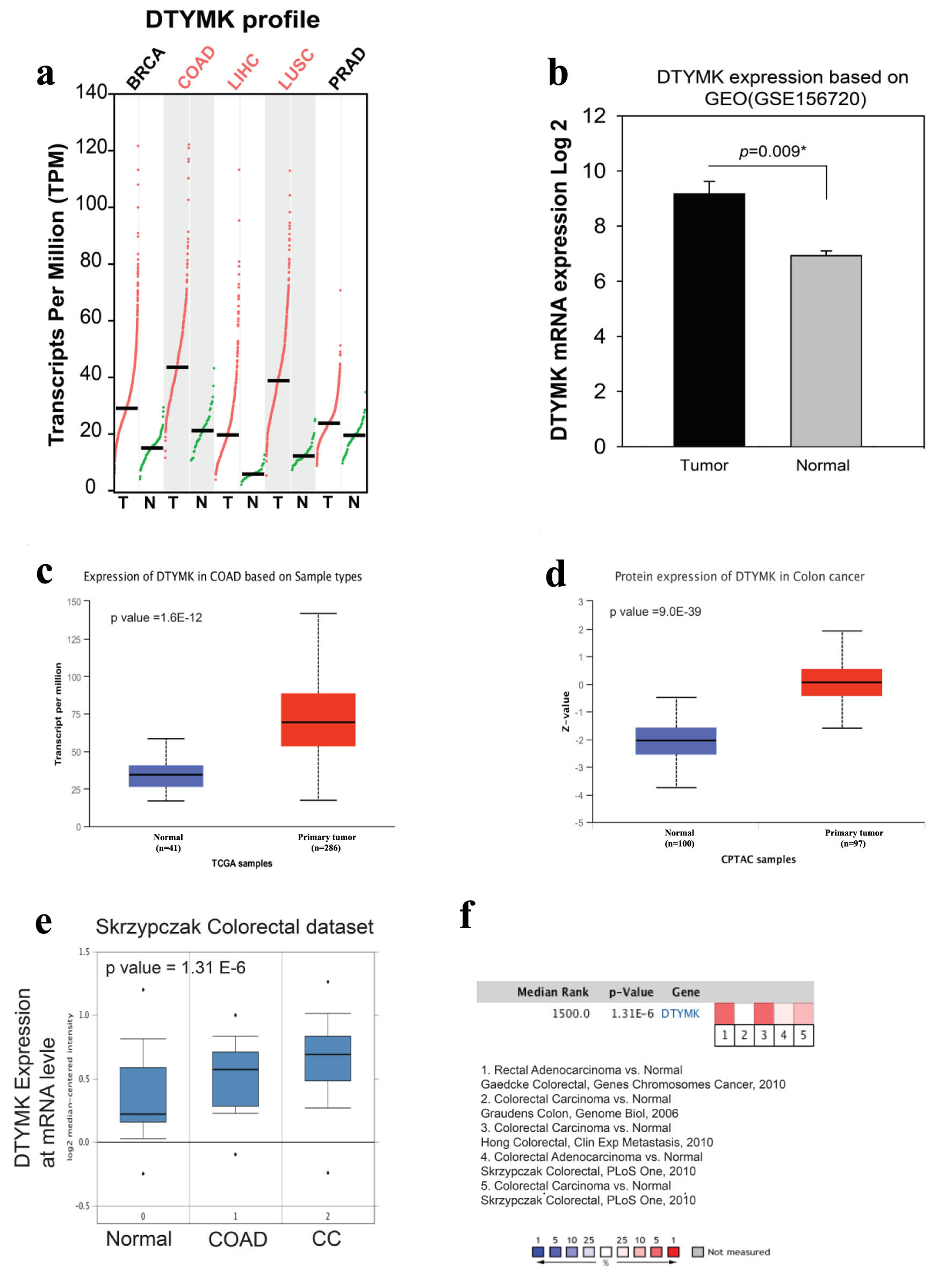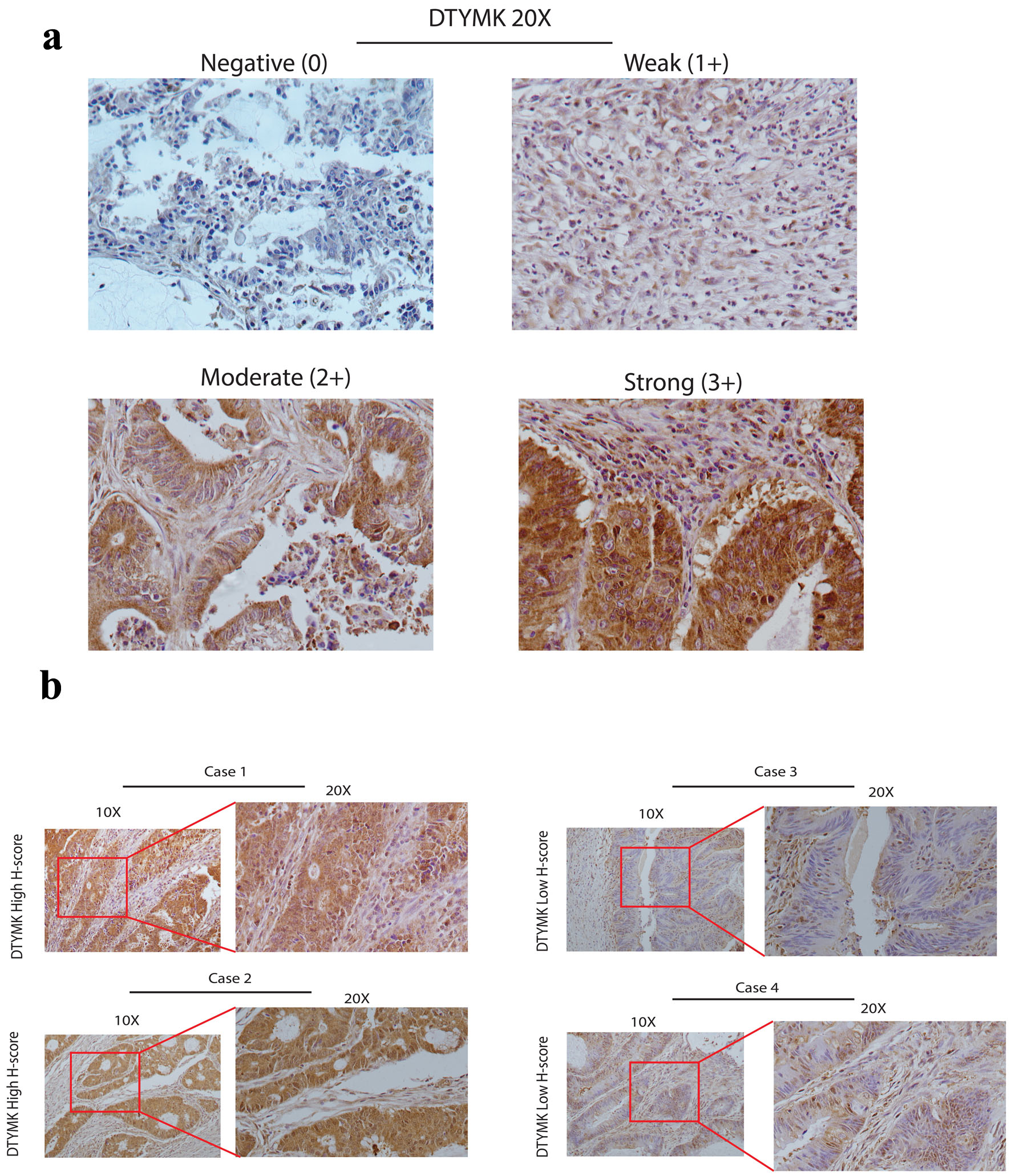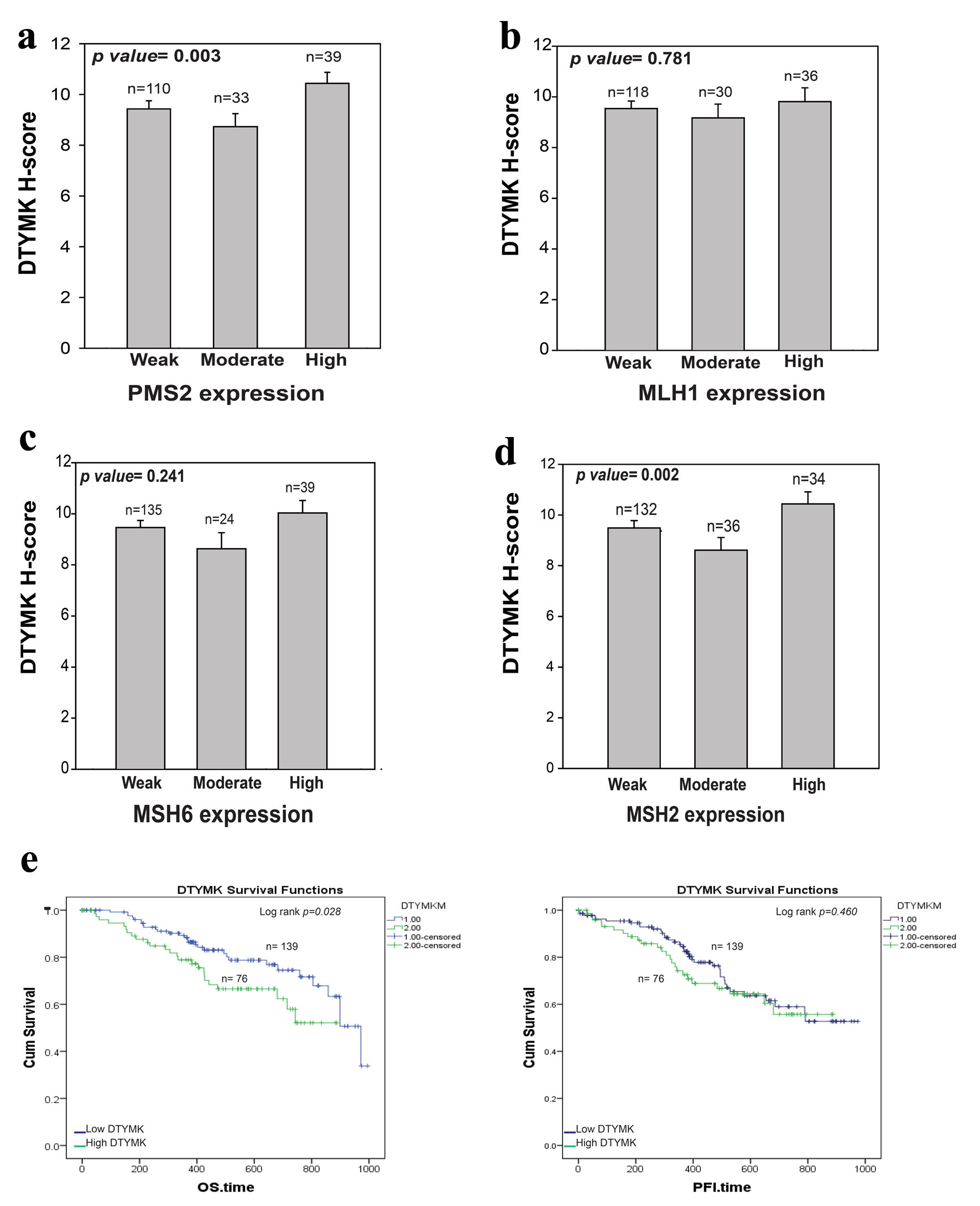
Figure 1. High expression level of DTYMK in colorectal cancer (COAD). (a) DTYMK gene expression was upregulated in several types of human malignancies especially in COAD. (b) Using GEO dataset, analysis of DTYMK expression in three pairs of tumors vs. normal of CRC patients. (c, d) Using UALCAN website, analysis of DTYMK at mRNA and protein levels. (e, f) Using Oncomine database, analysis of DTYMK in several COAD study cohorts. *P value < 0.05 was considered to be significant [16]. CRC: colorectal cancer; DTYMK: deoxythymidylate kinase; COAD: colorectal adenocarcinoma.

Figure 2. DTYMK protein expression by IHC. (a) These images show the DTYMK IHC grading system (original magnification × 20). Negative (0), weak (1+), moderate (2+), and strong (3+) grading systems were constructed based on DTYMK staining intensity. (b) In four cases, illustrative photographs depict examples of high DTYMK H-score and low DTYMK low H-score (original magnification was × 10 and × 20). DTYMK: deoxythymidylate kinase; IHC: immunohistochemistry.

Figure 3. Correlation between DTYMK and MMR proteins. (a-d) Analysis of the association between DTYMK IHC and PMS2, MLH1, MSH6 and MSH2 IHC results, respectively. P value < 0.05 was considered to be significant. (e) The overall survival (OS) and progression-free interval (PFI) analysis for high DTYMK vs. low DTYMK mRNA levels. Log rank P value < 0.05 was considered to be significant. DTYMK: deoxythymidylate kinase; IHC: immunohistochemistry; MMR: mismatch repair.


